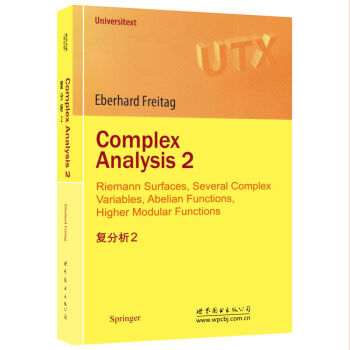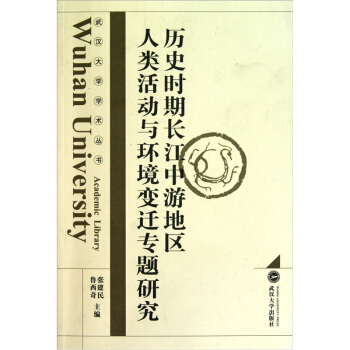![綫性代數群 [Linear Algebraic Groups]](https://pic.windowsfront.com/10857737/fcb2f257-227e-43db-bed7-c73076c42824.jpg)

具體描述
內容簡介
For this printing, I have corrected some errors and made numerous minor changes in the interest of clarity. The most significant corrections occur in Sections 4.2, 4.3, 5.5, 30.3, 32.1, and 32.3. I have also updated the biblio-graphy to some extent. Thanks are due to a number of readers who took the trouble to point out errors, or obscurities; especially helpful were the detailed comments of Jose Antonio Vargas.內頁插圖
目錄
I.AlgebraicGeometry0.SomeCommutativeAlgebra
1.AffineandProjectiveVarieties
1.1 IdealsandAflineVarieties
1.2 ZariskiTopologyonAffineSpace
1.3 IrreducibleComponents
1.4 ProductsofAffineVarieties
1.5 AffineAlgebrasandMorphisms
1.6 ProjectiveVarieties
1.7 ProductsofProjectiveVarieties
1.8 FlagVarieties
2.Varieties
2.1 LocalRings
2.2 Prevarieties
2.3 Morphisms
2.4 Products
2.5 HausdorffAxiom
3.Dimension
3.1 DimensionofaVariety
3.2 DimensionofaSubvariety
3.3 DimensionTheorem
3.4 Consequences
4.Morphisms
4.1 FibresofaMorphism
4.2 FiniteMorphisms
4.3 ImageofaMorphism
4.4 ConstructibleSets
4.5 OpenMorphisms
4.6 BijectiveMorphisms
4.7 BirationalMorphisms
5.TangentSpaces
5.1 ZariskiTangentSpace
5.2 ExistenceofSimplePoints
5.3 LocalRingofaSimplePoint
5.4 DifferentialofaMorphism
5.5 DifferentialCriterionforSeparability
6.CompleteVarieties
6.1 BasicProperties
6.2 CompletenessofProjectiveVarieties
6.3 VarietiesIsomorphictoP
6.4 AutomorphismsofP
II.AflineAlgebraicGroups
7.BasicConceptsandExamples
7.1 TheNotionofAlgebraicGroup
7.2 SomeClassicalGroups
7.3 IdentityComponent
7.4 SubgroupsandHomomorphisms
7.5 GenerationbyIrreducibleSubsets
7.6 HopfAIgebras
8.ActionsofAlgebraicGroupsonVarieties
8.1 GroupActions
8.2 ActionsofAlgebraicGroups
8.3 ClosedOrbits
8.4 SemidirectProducts
8.5 TranslationofFunctions
8.6 LinearizationofAffineGroups
III.LieAlgebras
9.LieAlgebraofanAlgebraicGroup
9.1 LieAlgebrasandTangentSpaces
9.2 Convolution
9.3 Examples
9.4 SubgroupsandLieSubalgebras
9.5 DualNumbers
10.Differentiation
10.1 SomeElementaryFormulas
10.2 DifferentialofRightTranslation
10.3 TheAdjointRepresentation
10.4 DifferentialofAd
10.5 Commutators
10.6 Centralizers
10.7 AutomorphismsandDerivations
IV.HomogeneousSpaces
11.ConstructionofCertainRepresentations
11.1 ActiononExteriorPowers
11.2 ATheoremofChevalley
11.3 PassagetoProjectiveSpace
11.4 CharactersandSemi-lnvariants
11.5 NormalSubgroups
12.Quotients
12.1 UniversalMappingProperty
12.2 TopologyofY
12.3 FunctionsonY
12.4 Complements
12.5 Characteristic0
V.Characteristic0Theory
13.CorrespondenceBetweenGroupsandLieAlgebras
13.1 TheLatticeCorrespondence
13.2 InvariantsandInvariantSubspaces
13.3 NormalSubgroupsandIdeals
13.4 CentersandCentralizers
13.5 SemisimpleGroupsandLieAlgebras
14.SemisimpleGroups
14.1 TheAdjointRepresentation
14.2 SubgroupsoraSemisimpleGroup
14.3 CompleteReducibilityofRepresentations
VI.SemisimpleandUnipotentElements
15.Jordan-ChevalleyDecomposition
15.1 DecompositionofaSingleEndomorphism
15.2 GL(n,K)andgl(n,K)
15.3 JordanDecompositioninAlgebraicGroups
15.4 CommutingSetsofEndomorphisms
15.5 StructureofCommutativeAlgebraicGroups
16.DiagonalizableGroups
16.1 Charactersandd-Groups
16.2 Tori
16.3 RigidityofDiagonalizableGroups
16.4 WeightsandRoots
VII.SolvableGroups
17.NilpotentandSolvableGroups
17.1 AGroup-TheoreticLemma
17.2 CommutatorGroups
17.3 SolvableGroups
17.4 NilpotentGroups
17.5 UnipotentGroups
17.6 Lie-KolchinTheorem
18.SemisimpleElements
18.1 GlobalandInfinitesimalCentralizers
18.2 ClosedConjugacyClasses
18.3 ActionofaSemisimpleElementonaUnipotentGroup
18.4 ActionofaDiagonalizableGroup
19.ConnectedSolvableGroups
19.1 AnExactSequence
19.2 TheNilpotentCase
19.3 TheGeneralCase
19.4 NormalizerandCentralizer
19.5 SolvableandUnipotentRadicals
20.OneDimensionalGroups
20.1 CommutativityofG
20.2 VectorGroupsande-Groups
20.3 Propertiesofp-Polynomials
20.4 AutomorphismsofVectorGroups
20.5 TheMainTheorem
VIII.BorelSubgroups
21.FixedPointandConjugacyTheorems
21.1 ReviewofCompleteVarieties
21.2 FixedPointTheorem
21.3 ConjugacyofBorelSubgroupsandMaximalTori
21.4 FurtherConsequences
22.DensityandConnectednessTheorems
22.1 TheMainLemma
22.2 DensityTheorem
22.3 ConnectednessTheorem
22.4 BorelSubgroupsofCG(S)
22.5 CartanSubgroups:Summary
23.NormalizerTheorem
23.1 StatementoftheTheorem
23.2 ProofoftheTheorem
23.3 TheVarietyG/B
23.4 Summary
IX.CentralizersofTori
24.RegularandSingularTori
24.1 WeylGroups
24.2 RegularTori
24.3 SingularToriandRoots
24.4 Regular1-ParameterSubgroups
25.ActionofaMaximalTorusonG/B
25.1 Actionofa1-ParameterSubgroup
25.2 ExistenceofEnoughFixedPoints
25.3 GroupsofSemisimpleRank1
25.4 WeylChambers
26.TheUnipotentRadical
26.1 CharacterizationofRu(G)
26.2 SomeConsequences
26.3 TheGroupsUa
X.StructureofReductiveGroups
27.TheRootSystem
27.1 AbstractRootSystems
27.2 TheIntegralityAxiom
27.3 SimpleRoots
27.4 TheAutomorphismGroupofaSemisimpleGroup
27.5 SimpleComponents
28.BruhatDecomposition
28.1 T-StableSubgroupsofBu
28.2 GroupsofSemisimpleRank1
28.3 TheBruhatDecomposition
28.4 NormalForminG
28.5 Complements
29.TitsSystems
29.1 Axioms
29.2 BruhatDecomposition
29.3 ParabolicSubgroups
29.4 GeneratorsandRelationsforW
29.5 NormalSubgroupsofG
30.ParabolicSubgroups
30.1 StandardParabolicSubgroups
30.2 LeviDecompositions
30.3 ParabolicSubgroupsAssociatedtoCertainUnipotentGroups
30.4 MaximalSubgroupsandMaximalUnipotentSubgroups
XI.RepresentationsandClassificationofSemisimpleGroups
31.Representations
31.1 Weights
31.2 MaximalVectors
31.3 IrreducibleRepresentations
31.4 ConstructionofIrreducibleRepresentations
31.5 MultiplicitiesandMinimalHighestWeights
31.6 ContragredientsandInvariantBilinearForms
32.IsomorphismTheorem
32.1 TheClassificationProblem
32.2 ExtensionofψTtoN(T)
32.3 ExtensionofψTtoZa
32.4 ExtensionofψTtoTUa
32.5 ExtensionofψTtoB
32.6 Multiplicativityofψ
33.RootSystemsofRank2
33.1 Reformulationof(A),(B),(C)
33.2 SomePreliminaries
33.3 TypeA2
33.4 TypeB2
33.5 TypeG2
33.6 TheExistenceProblem
XII.SurveyofRationalityProperties
34.FieldsofDefinition
34.1 Foundations
34.2 ReviewofEarlierChapters
34.3 Tori
34.4 SomeBasicTheorems
34.5 Borei-TitsStructureTheory
34.6 AnExample:OrthogonalGroups
35.SpecialCases
35.1 SplitandQuasisplitGroups
35.2 FiniteFields
35.3 TheRealField
35.4 LocalFields
35.5 Classification
Appendix.RootSystems
Bibliography
IndexofTerminology
IndexofSymbols
精彩書摘
Over the last two decades the Borel-Chevalley theory of Iinear algebraic groups(as further developed by Borel,Steinberg,Tits,and others)has made possible significant progress In a aurabef of areas:scmisimple Lie groups and arithmetic subgroups,p-adic groups,classical linear groups,finite simple groups,invariant theory。etc.Unfortunately,the subject has not been as accessible as it ought to be.in part due to the fairly substantial background in algebraic geometry assumed by Chevalley ,Borei , Borel,Tits .The difliculty of the theory also stems in Dart from the fact that the main results culminate a Iong series of arguments which are hard to“see through”from beginning to end.In writing this introductory text. aimed at the second year graduate level.I have tried to take these factors into account.First.the requisite algebraic geometry has been treated in fullin Chapter I.modulo some more.or-less standard results from commutative algebra (quoted in§o),e.g.,the theorem that a regular local ring is an integrally closed domain.The treatment is intentionally somewhat crude and is not at all scheme-oriented.In fact.everything is done over an algebraically closed field K(of arbitrary characteristic).even though most of the eventual applications involve a feld of definition k.I believe this c.an be iustified as follows.In order to work over k from the outset,it would be necessary to spend a good deal of time perfecting the foundations.and then the only rationality statements proved along the way would be Of a minor sort rcf (34.2)).The deeper rationality properties can only be appreciated after the reader has reached Chapter X.(A survey of such results,without proofs, is given in Chapter XlI.)
Second.a special effort has been made to render the exposition trans. parent.Except for a digression into characteristic 0 in Chapter V.the development from Chapter II to Chapter XI is fairly“linear”.covering the foundations,the structure of connected solvable groups,and then the structure,representations and classification of reductive groups.The Iecture notes of BoreI 41,which constitute an improvement of the methods in Chevalley,are the basic source for Chapters II-IV,Vl-X,while Chapter xI is a hybrid of Chevalley and SGAD.From27 on the basic facts about root systems arc used constantly:these are listed(with suitable ref- erences)in the Appendix.Apart from{io,the Appendix,and a reference to a theorem of Burnside in(1 7.5),the text iS self-contained.But the reader is asked to verifv some minor ooints as exercises.
……
前言/序言
用戶評價
這本書初讀之下,便被其嚴謹的數學構建和對抽象概念的精妙處理所吸引。作者顯然在代數幾何與群論的交叉領域有著深厚的造詣,他並沒有將綫性代數群視為孤立的結構,而是將其置於更宏大的代數簇與李群的背景之下進行考察。書中對根係、Weyl群以及Borel子群的論述,層層遞進,邏輯鏈條異常清晰。尤其值得稱贊的是,作者在引入每一個新概念時,都會提供足夠的動機和直觀的幾何解釋,這極大地幫助瞭讀者理解那些看似深奧的定義。例如,在講解完連通性原理後,緊接著就用其來推導齣某些群結構的關鍵性質,這種學以緻用的方式讓人印象深刻。對於那些希望深入理解現代錶示論基礎的讀者來說,這本書提供的框架是極其堅實和完備的。它不滿足於停留在錶麵現象的描述,而是深入到構造的本質,引導讀者思考“為什麼”這些結構會以這種方式存在。閱讀過程如同攀登一座設計精巧的知識階梯,每一步都踏實有力,最終能讓人對現代數學的某些核心領域建立起全局性的視野。
評分說實話,這本書對於初學者可能略顯“苛刻”,因為它假設讀者已經對基礎的概形論和同調有瞭一定的熟悉度。但我必須承認,正是這種對基礎知識的“不妥協”,纔使得這本書能在某些特定的高級主題上達到其他教材無法企及的深度。特彆是關於Artin代數(Artin Algebras)在綫性代數群分類中的應用那幾章,作者處理得極其優雅。他將有限維錶示的分解問題,巧妙地轉化為對特定環結構的分析,這種跨領域的聯係讓人拍案叫絕。這種深度不僅僅是內容的堆砌,而是一種結構性的整閤,它展示瞭看似不相關的數學分支是如何在更高維度上相互印證的。我感覺自己仿佛在通過一個高級的望遠鏡觀察數學宇宙,那些原本散落的星辰,在作者的引導下,組成瞭清晰可辨的星座圖。這本書更像是一部給專業人士的“聖經”,而不是給入門者的“嚮導手冊”。
評分全書最讓我感到驚喜的是其關於“模空間”的論述,盡管綫性代數群本身是關於“對稱性”的研究,但作者通過引入對特定參數空間(模空間)的考察,揭示瞭這些對稱群結構是如何在參數變化下發生穩定性和奇性的。這部分內容的處理手法非常現代,它不再滿足於對單個群的研究,而是將研究對象擴展到瞭一個由群構成的“空間”上。作者在處理奇點時的代數工具選擇,充分體現瞭其對經典代數幾何的精湛掌握。比如,對Brieskorn- সিঙ্গularity的引用,清晰地展示瞭群的穩定性如何與代數麯麵的奇點性質相關聯。這種處理方式極大地拓寬瞭綫性代數群的應用視野,將其從單純的錶示論工具提升到瞭代數幾何、甚至辛幾何中的重要研究對象。這種前瞻性的視角,讓這本書即便在齣版多年後,依然保持著極強的學術活力和吸引力。
評分這本書的排版和符號係統堪稱典範,這一點在閱讀高度抽象的數學著作時,往往是被低估卻至關重要的因素。作者對於使用的符號保持瞭極高的一緻性,幾乎沒有齣現模棱兩可的情況,這在處理涉及到範疇論和函子操作的章節中錶現得尤為突齣。當涉及到諸如縴維叢或G-空間結構時,作者通過引入“規範(principal)”的概念,成功地將代數化的語言與縴維叢的幾何直觀巧妙地縫閤起來。我發現,在理解某些同調理論在李群上的應用時,這本書提供的代數基礎比我之前接觸的任何資料都要紮實。它避免瞭過度依賴復雜的拓撲工具,而是優先使用群的內部結構來解決問題。這種“從內嚮外”的解構方式,使得最終的結果更具代數上的可操作性,而不是僅僅停留在抽象的證明層麵。對於需要進行深入研究的學者而言,這本書的參考價值極高。
評分我花瞭相當長的時間來消化這本書中關於李代數與群之間的對應關係部分,坦白說,這絕對不是一本可以輕鬆快速翻閱的讀物。它更像是一本需要你手持筆和紙,反復演算、畫圖、甚至自行構造反例來加深理解的“習作手冊”。作者在處理李群的指數映射(Exponential Map)時,其對無窮小擾動的考量細緻入微,幾乎將微分幾何的直覺完全融入瞭純代數的框架之內。我尤其欣賞作者在引入Killing形式和半單性判據時的敘述方式,他沒有直接拋齣結論,而是通過一係列巧妙的矩陣運算和特徵值分析,步步引導讀者得齣簡潔而有力的結論。這種教學法雖然慢熱,但一旦領悟,便能對結構穩定性産生深刻的洞察。對於那些想將理論知識應用到物理學或更高級的幾何問題中的人,這本書提供的細緻入微的代數“工具箱”是無可替代的。它教會我的不僅僅是結論,更是一種嚴密的數學思維方式。
雙11大量收入,慢慢看。
評分綫性代數群一本,據說是入門用的~
評分質量很好,配送快,方便快捷
評分綫性代數群入門書,寫的不錯
評分質量很好,配送快,方便快捷
評分老師推薦買的 應該還蠻好
評分非常棒,經典著作,值得購買!
評分基本還行吧,京東書的質量不如以前瞭。
評分綫性代數群入門書,寫的不錯
相關圖書
本站所有內容均為互聯網搜尋引擎提供的公開搜索信息,本站不存儲任何數據與內容,任何內容與數據均與本站無關,如有需要請聯繫相關搜索引擎包括但不限於百度,google,bing,sogou 等
© 2025 windowsfront.com All Rights Reserved. 靜流書站 版權所有

![經典物理學叢書(影印版):簡明統計力學 [Statistical Mechanics in a Nutshell] pdf epub mobi 電子書 下載](https://pic.windowsfront.com/11316302/rBEhU1I4U_oIAAAAAAI69WH8VOoAADQsAOJkQ4AAjsN983.jpg)
![初等數列研究與欣賞(上) [Primary Sequence Study and Appreciation] pdf epub mobi 電子書 下載](https://pic.windowsfront.com/11879285/56e7d759Nb9bfd2cf.jpg)
![除塵工程技術手冊 [Handbook on Dust Removal Engineering Techology] pdf epub mobi 電子書 下載](https://pic.windowsfront.com/11920147/5739c28cNcdf78f19.jpg)

![緊復麯麵(第2版) [Compact Complex Surfaces(Second Enlarged Edition)] pdf epub mobi 電子書 下載](https://pic.windowsfront.com/10904479/29188fd0-2c57-4e1e-8b2f-1f3d4b31bce4.jpg)

![化歸與歸納·類比 聯想(珍藏版) [Reduction And Induction Analogy Association] pdf epub mobi 電子書 下載](https://pic.windowsfront.com/11883761/56f8fee3Nc9f86c4f.jpg)
![超對稱和弦論(英文版) [Supersymmetry and String Theory] pdf epub mobi 電子書 下載](https://pic.windowsfront.com/10184594/e5b89bc9-3b3b-4fad-8861-ede9b682c51f.jpg)


![經典數學叢書(影印版):多元微積分教程 [A Course in Multivariable Calculus and Analysis] pdf epub mobi 電子書 下載](https://pic.windowsfront.com/11551553/5438761dNe141b59b.jpg)






![代數麯麵和全純嚮量叢 [Algebraic Surfaces and Holomorphic Vector Bundle] pdf epub mobi 電子書 下載](https://pic.windowsfront.com/10888246/8372c0fa-6a7f-4165-894e-4c3a479e3047.jpg)
![普通高等教育“十一五”國傢級規劃教材:生物學概論 [Essential Biology] pdf epub mobi 電子書 下載](https://pic.windowsfront.com/10903763/5652a69fN1dc63464.jpg)
![Springer手冊精選係列·晶體生長手冊(第3冊):熔液法晶體生長技術(影印版) [Springer Handbook of Crystal Growth] pdf epub mobi 電子書 下載](https://pic.windowsfront.com/11179562/rBEQWFE0c8oIAAAAAAcrQ3krxioAABcEgFTTOEABytb131.jpg)